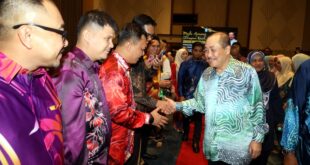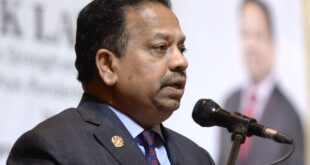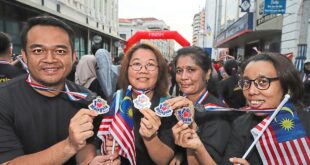JAWI assemblyman H’ng Mooi Lye, the new Penang local government, town and country planning committee chairman, has a to-do list crammed with urgent priorities.
Besides moving ahead with flood mitigation projects, he is also looking into the management of the Pulau Burung and Jelutong landfills that are reaching capacity.
H’ng said he still remembered the Pulau Burung landfill fire on Jan 12 last year, which took almost three weeks to be put out.
The landfill, located in Jalan Byram on the mainland, was declared a Level 1 disaster area by the National Security Council (NSC).
H’ng wants to initiate the rehabilitation of the Jelutong landfill spanning over 34ha.About 400 nearby residents had to be evacuated after their residential area was filled with toxic smoke.
Forty-four people from Ladang Byram were accommodated at a relief centre, while the rest of the residents moved in temporarily with family members living elsewhere.
“It so happened that the fire in Pulau Burung was in my constituency.
“We have to appoint a new concessionaire to manage the landfill after terminating the contract of the previous concessionaire. The request for proposal (RFP) will be issued in the first quarter of next year.
“For now, Seberang Prai City Council (MBSP) is managing the landfill. It is an arduous task to handle wastes from the island and the mainland.
“The new concessionaire will have to come up with a much more technologically advanced and effective management system,” said H’ng who served as a Seberang Prai City councillor from 2015 to 2018.
It was reported that the Environment Department (DoE) launched an investigation into the fire.
On the Jelutong landfill on the island, H’ng said he wanted to “kickstart” the rehabilitation of the landfill spanning over 34ha and containing 13.5 million tonnes of waste.
“We need more time to come up with a much more comprehensive plan to carry out the redevelopment project once the rehabilitation is completed.
“The actual rehabilitation might take five years, after the details are ironed out.”
In 2020, developer PLB Engineering was appointed to jointly develop the land with the state government, with the former given 15 years to achieve the rehabilitation.
The landfill along the Tun Dr Lim Chong Eu Expressway, a mere 3km from the heart of the city’s heritage enclave, has been dubbed a “gold mine” because it is the only large swathe of undeveloped land left in the town.
According to estimations, it could bring in billions of ringgit in gross development value.
H’ng said his development strategies would also focus on enforcing the present laws and by-laws of the Local Government Act, Drainage and Building Act and the Town and Country Planning Act.
“While creating a conducive atmosphere for private development, we will ensure that we strike a balance but enforcement needs to be conducted against those who flout the rules.”
On flood mitigation, H’ng said the RM600mil Sungai Pinang and the RM200mil Sungai Jawi projects would be given top priority.
“Under the jurisdiction of the Drainage and Irrigation Department, the local council has an important role to ensure the projects are completed successfully.”
Flash floods are still a perennial problem in Penang, with certain low-lying areas inundated during the rainy season every year.
H’ng also said the state government would not compromise on those who fail to adhere to the Unesco World Heritage Site Special Area Plan (SAP), both in Category 1 heritage sites and other areas which have heritage buildings.
“My councillor days at MBSP have given me an insight into how both development and the objectives of SAP can be realised.
“The SAP will be the best reference for both developers and the state.
“It helps to drive economic progress while maintaining sustainability and conservation of historical George Town.”
On town and country planning, H’ng said the local councils would be given full authority to oversee development and enforcement while optimising land use with the SAP as a guideline.
He said Penang Island City Council (MBPP) had also embarked on its Digital Transformation Plan, with the development of Smart Island Digital Twin (SmIDaT) which began in 2019.
“This brings MBPP to the next level where it will have the tools to collect data, analyse and forecast Penang island’s future scenarios.
“The city council will be able to plan heritage conservation, traffic management, landslide and slope monitoring, flood management and other climate change initiatives through SmIDaT.”
H’ng said the Penang Island Draft Local Plan 2035 was being prepared, with the city council scheduled to gather public opinion on future development in December.
“In line with the sustainable development goals, I have been meeting stakeholders to understand the development challenges they face and how the state can offer the right strategies for a balanced development.
“The biggest issue on the island is land scarcity.
“We need to look into how best our strategies can synchronise with future development of the state,” he said.
 BeritaKini.biz Berita Viral Terkini di Malaysia
BeritaKini.biz Berita Viral Terkini di Malaysia





